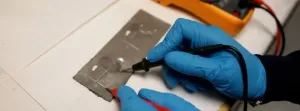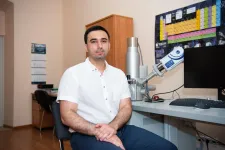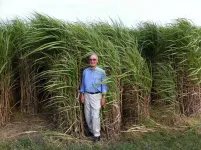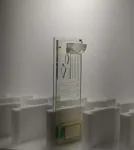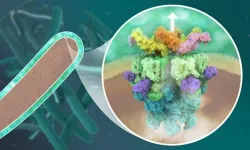Optical tweezer technology tweaked to overcome dangers of heat
2021-06-25
(Press-News.org) Three years ago, Arthur Ashkin won the Nobel Prize for inventing optical tweezers, which use light in the form of a high-powered laser beam to capture and manipulate particles. Despite being created decades ago, optical tweezers still lead to major breakthroughs and are widely used today to study biological systems.
However, optical tweezers do have flaws. The prolonged interaction with the laser beam can alter molecules and particles or damage them with excessive heat.
Researchers at The University of Texas at Austin have created a new version of optical tweezer technology that fixes this problem, a development that could open the already highly regarded tools to new types of research and simplify processes for using them today.
The breakthrough that avoids this problem of overheating comes out of a combination of two concepts: the use of a substrate composed of materials that are cooled when a light is shined on them (in this case, a laser); and a concept called thermophoresis, a phenomenon in which mobile particles will commonly gravitate toward a cooler environment.
The cooler materials attract particles, making them easier to isolate, while also protecting them from overheating. By solving the heat problem, optical tweezers could become more widely used to study biomolecules, DNA, diseases and more.
"Optical tweezers have many advantages, but they are limited because whenever the light captures objects, they heat up," said Yuebing Zheng, the corresponding author of a new paper published in Science Advances and an associate professor in the Walker Department of Mechanical Engineering. "Our tool addresses this critical challenge; instead of heating the trapped objects, we have them controlled at a lower temperature."
Optical tweezers do the same thing as regular tweezers -- pick up small objects and manipulate them. However, optical tweezers work at a much smaller scale and use light to capture and move objects.
Analyzing DNA is a common use of optical tweezers. But doing so requires attaching nano-sized glass beads to the particles. Then to move the particles, the laser is shined on the beads, not the particles themselves, because the DNA would be damaged by the heating effect of the light.
"When you are forced to add more steps to the process, you increase uncertainty because now you have introduced something else into the biological system that may impact it," Zheng said.
This new and improved version of optical tweezers eliminates these extra steps.
The team's next steps include developing autonomous control systems, making them easier for people without specialized training to use and extending the tweezers' capabilities to handle biological fluids such as blood and urine. And they are working to commercialize the discovery.
Zheng and his team have much variety in their research, but it all centers on light and how it interacts with materials. Because of this focus on light, he has closely followed, and used, optical tweezers in his research. The researchers were familiar with thermophoresis and hoped they could trigger it with cooler materials, which would actually draw particles to the laser to simplify analysis.
INFORMATION:
This research was supported by grants from the National Institutes of Health's National Institute of General Medical Sciences and the National Science Foundation. Other authors are Jingang Li and Zhihan Chen of UT's Texas Materials Institute; Yaoran Liu of the Department of Electrical and Computer Engineering; Pavana Siddhartha Kollipara of the Walker Department of Mechanical Engineering; and Yichao Feng and Zhenglong Zhang of Shaanxi Normal University's School of Physics and Information in China.
[Attachments] See images for this press release:
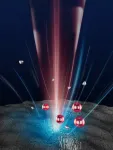
ELSE PRESS RELEASES FROM THIS DATE:
2021-06-25
Want a smartphone that stretches, takes damage, and still doesn't miss a call?
A team of Virginia Tech researchers from the Department of Mechanical Engineering and the Macromolecules Innovation Institute has created a new type of soft electronics, paving the way for devices that are self-healing, reconfigurable, and recyclable. These skin-like circuits are soft and stretchy, sustain numerous damage events under load without losing electrical conductivity, and can be recycled to generate new circuits at the end of a product's life.
Led by Assistant Professor Michael Bartlett, the team recently published its findings in END ...
2021-06-25
Scientists from the National University of Science and Technology "MISIS" (NUST MISIS) in cooperation with their colleagues from the Siberian Federal University and the Research and Production Centre of Magnetic Hydrodynamics (Krasnoyarsk) have developed a technology for producing a unique heat-resistant aluminium alloy with improved durability.
According to the researchers, this new alloy could replace more expensive and heavier copper conductors in aircraft and high-speed rail transport. The study results were published in an interdisciplinary, peer-reviewed journal, the Materials Letters. (https://www.sciencedirect.com/science/article/abs/pii/S0167577X2100896X)
Researchers have created a method for producing ...
2021-06-25
Night and day, oil tankers, yachts and cargo ships stacked with shipping containers ply the 80-kilometer (50-mile) waterway through the jungles of Panama between the Atlantic and the Pacific Ocean: about 40 ships every 24 hours. But even though the Canal is fed by freshwater rivers that empty through the locks on each end, a system that generally prevents fish and smaller marine invertebrates from hopping from ocean to ocean, some still manage to get through, clinging to the hulls of ships. Other invading species arrive from far-flung ports, dumped with ballast water as ships prepare for transit.
"Panama is a major shipping hub that provides amazing opportunities to test key ideas about marine invasions by studying ...
2021-06-25
A team of engineers and clinicians has developed an ultra-thin, inflatable device that can be used to treat the most severe forms of pain without the need for invasive surgery.
The device, developed by researchers at the University of Cambridge, uses a combination of soft robotic fabrication techniques, ultra-thin electronics and microfluidics.
The device is so thin - about the width of a human hair - that it can be rolled up into a tiny cylinder, inserted into a needle, and implanted into the epidural space of the spinal column, the same area ...
2021-06-25
A new electrode that could free up 20% more light from organic light-emitting diodes has been developed at the University of Michigan. It could help extend the battery life of smartphones and laptops, or make next-gen televisions and displays much more energy efficient.
The approach prevents light from being trapped in the light-emitting part of an OLED, enabling OLEDs to maintain brightness while using less power. In addition, the electrode is easy to fit into existing processes for making OLED displays and light fixtures.
"With our approach, you can do it all in ...
2021-06-25
More corn is grown in the United States than any other crop, but we only use a small part of the plant for food and fuel production; once people have harvested the kernels, the inedible leaves, stalks and cobs are left over. If this plant matter, called corn stover, could be efficiently fermented into ethanol the way corn kernels are, stover could be a large-scale, renewable source of fuel.
"Stover is produced in huge amounts, on the scale of petroleum," said Whitehead Institute Member and Massachusetts Institute of Technology (MIT) biology professor Gerald Fink. "But there are enormous technical challenges to using them cheaply to create biofuels and other important chemicals."
And so, year after year, most of the woody corn material is left in the fields to rot.
Now, a ...
2021-06-25
DURHAM, N.C. - Biomedical engineers at Duke University have demonstrated a tablet-sized device that can reliably detect multiple COVID-19 antibodies and biomarkers simultaneously.
Initial results show the test can distinguish between antibodies produced in response to SARS-CoV-2 and four other coronaviruses with 100% accuracy.
The researchers are now working to see if the easy-to-use, energy-independent, point-of-care device can be used to predict the severity of a COVID-19 infection or a person's immunity against variants of the virus.
Having also recently shown the same "D4 assay" platform can detect Ebola infections a day earlier than the gold standard polymerase chain reaction (PCR) test, the researchers say the results show how flexible the technology can be to adapt to other ...
2021-06-25
CAMBRIDGE, MA - Boosting production of biofuels such as ethanol could be an important step toward reducing global consumption of fossil fuels. However, ethanol production is limited in large part by its reliance on corn, which isn't grown in large enough quantities to make up a significant portion of U.S. fuel needs.
To try to expand biofuels' potential impact, a team of MIT engineers has now found a way to expand the use of a wider range of nonfood feedstocks to produce such fuels. At the moment, feedstocks such as straw and woody plants are difficult to use for biofuel production because they first need to be broken down to fermentable sugars, a process that releases numerous byproducts that are toxic to yeast, the microbes most commonly used to produce biofuels.
The ...
2021-06-25
Tuberculosis is one of the top ten causes of death worldwide, infecting about one-quarter of the world's population. Although it is treatable, the rise of multidrug-resistant tuberculosis poses a major threat to global health security, and has been declared by the World Health Organization as a global health emergency. Reduced access to diagnosis and treatment during the COVID-19 pandemic is expected to dramatically increase the number of tuberculosis infections. This will set global efforts to tackle the disease back several years.
Tuberculosis is caused by infection with Mycobacterium tuberculosis: a bacterium that infects human lungs and other organs by using complex molecular ...
2021-06-25
When Winter Storm Uri hit, many Texans lost power from February 14-20, resulting in losses of lives and economic activity, and damages to their homes that for some are still not completely repaired. Now, four months later as demand for electricity has increased at the start of the summer amid tight supply, Texans continue to prioritize improvements to the power grid, albeit with doubt as to whether the Texas Legislature and Governor can get the job done.
In a survey by the Hobby School of Public Affairs and UH Energy at the University of Houston fielded between May 13-24, 1,500 individuals in Texas aged 18 and older responded to a series of questions regarding their experience during Winter Storm Uri and their evaluation ...
LAST 30 PRESS RELEASES:
[Press-News.org] Optical tweezer technology tweaked to overcome dangers of heat

